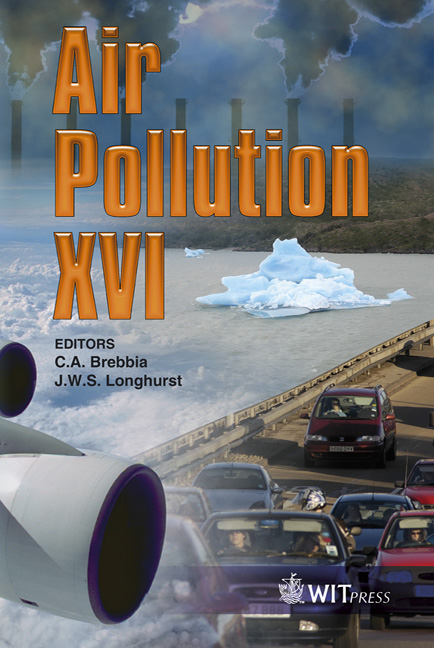A Modelling Tool For PM10 Exposure Assessment: An Application Example
Price
Free (open access)
Transaction
Volume
116
Pages
10
Page Range
197 - 206
Published
2008
Size
484 kb
Paper DOI
10.2495/AIR080211
Copyright
WIT Press
Author(s)
E. Angelino, M. P. Costa, E. Peroni & C. Sala
Abstract
A tool has been developed with the aim of calculating population exposure to PM10 concentrations. It integrates two main modules: a linker to the outputs of a chemistry and transport model (outdoor ambient concentrations) and a timevariable exposure module. The leading concept behind exposure modelling is that time-weighted average exposure can be considered as the sum of the partial exposures determined by both the concentration and the time spent in each so called micro-environment. A run of a CTM (Chemical and Transport Model) over the whole year of 2006 provided the PM10 hourly outdoor concentration field. In the absence of specifically measured data, some input data, such as infiltration parameters and indoor sources concentrations, have been chosen from relevant literature data. This paper reports the main input data used and the results obtained during an application to the domain under study, located in the North of Italy. The results confirm that the population habits and indoor sources contributions are the most critical parameters when assessing exposure. Keywords: exposure modelling, particulate modelling, air quality management. 1 Introduction A modelling system for exposure assessment must be able to integrate numerous and various pieces of information such as land use, emissions, meteorology, dispersion and chemical reactions of pollutants, population activity patterns and distribution. In recent years a growing integration of all this information, generally obtained by employing different and separate models in the past, into more sophisticated and comprehensive modelling systems has occurred. In the past, US modelling groups have supported the most comprehensive efforts in this area (Seigneur [14], Burke et al [3]), but recent European efforts have also
Keywords
exposure modelling, particulate modelling, air quality management.





